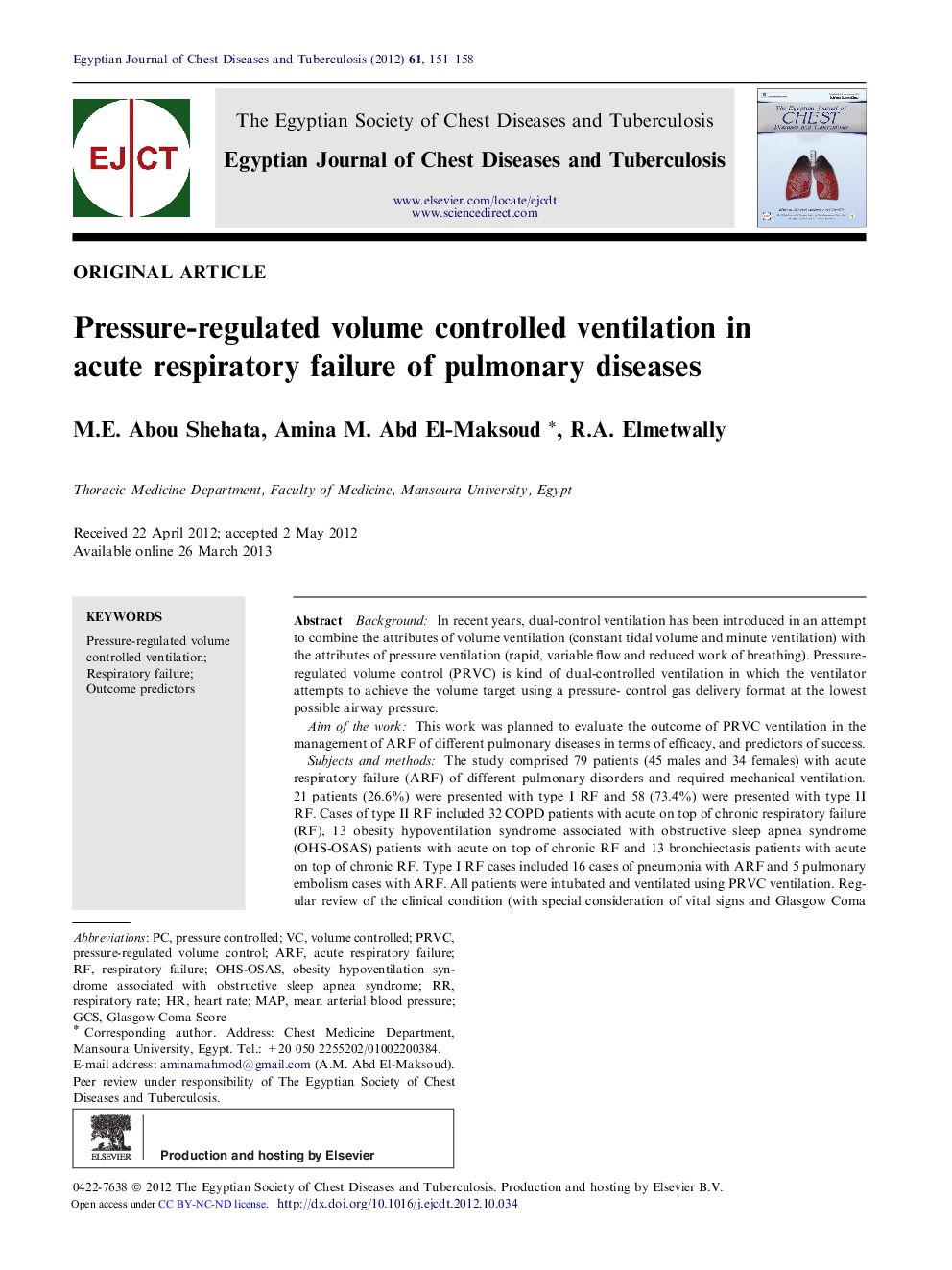| Article ID | Journal | Published Year | Pages | File Type |
|---|---|---|---|---|
| 3400396 | Egyptian Journal of Chest Diseases and Tuberculosis | 2012 | 8 Pages |
BackgroundIn recent years, dual-control ventilation has been introduced in an attempt to combine the attributes of volume ventilation (constant tidal volume and minute ventilation) with the attributes of pressure ventilation (rapid, variable flow and reduced work of breathing). Pressure-regulated volume control (PRVC) is kind of dual-controlled ventilation in which the ventilator attempts to achieve the volume target using a pressure- control gas delivery format at the lowest possible airway pressure.Aim of the workThis work was planned to evaluate the outcome of PRVC ventilation in the management of ARF of different pulmonary diseases in terms of efficacy, and predictors of success.Subjects and methodsThe study comprised 79 patients (45 males and 34 females) with acute respiratory failure (ARF) of different pulmonary disorders and required mechanical ventilation. 21 patients (26.6%) were presented with type I RF and 58 (73.4%) were presented with type II RF. Cases of type II RF included 32 COPD patients with acute on top of chronic respiratory failure (RF), 13 obesity hypoventilation syndrome associated with obstructive sleep apnea syndrome (OHS-OSAS) patients with acute on top of chronic RF and 13 bronchiectasis patients with acute on top of chronic RF. Type I RF cases included 16 cases of pneumonia with ARF and 5 pulmonary embolism cases with ARF. All patients were intubated and ventilated using PRVC ventilation. Regular review of the clinical condition (with special consideration of vital signs and Glasgow Coma Score) and blood gas analysis was done to all patients after 1 and 2 h of invasive ventilation and 6 h at varying interval thereafter till the time of weaning with recording of development of any organ dysfunction, duration of mechanical ventilation and length of hospital stay.ResultsThe outcome showed (62%) survival and (38%) mortality. MODS have developed in 49.3% cases. There was no significant difference in the outcome of PRVC as regard survival between different etiologies of respiratory failure; also there was no significant difference as regard survival with the use of PRVC between type I and type II respiratory failure. There were significant improvement of respiratory rate and Glasgow Coma Score following mechanical ventilation with PRVC mode after extubation. There were significant improvement of arterial blood gases after 1 h, 2 h, 2nd day, 3rd day of using PRVC with gradual reduction of the used FiO2 in the same period. There were significant more worse hypercapnia and higher bicarbonate level on admission in died than survived cases. There were significant longer duration of PRVC and overall mechanical ventilation days in died than survived cases. Co-morbid renal impairment was significantly higher in died than survived cases. There were significant more development of MODS in died than survived cases, with significant more presentation of cardiovascular and renal failure during PRVC.ConclusionPRVC ventilation improves oxygenation parameters in ARF of different etiologies and is equally effective in management of ARF of different pulmonary disorders. The most important predictors for mortality were development of MODS and prolonged duration of MV as detected by logistic regression analysis.
